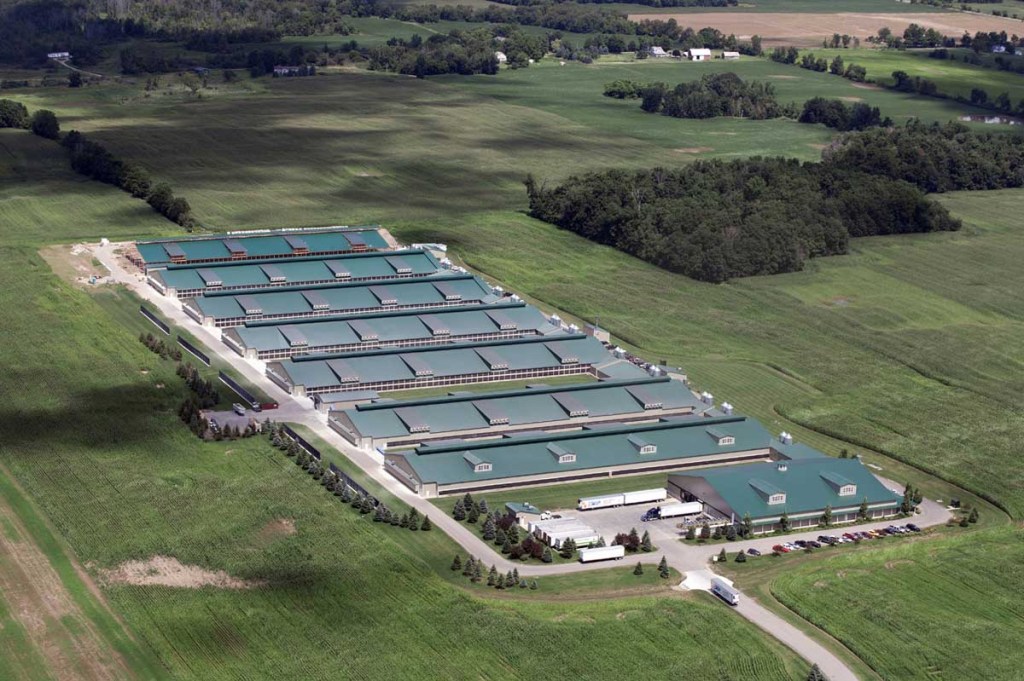Millions of ‘organic’ eggs come from industrial scale chicken operations, group says.
Published 2:30 pm Tuesday, December 15, 2015

- Last year, Cornucopia filed complaints with the USDA regarding five large organic egg producers, including Herbrucks, shown here, in Saranac, Michigan.
At some egg farms, chickens get the run of hundreds of acres of pasture. They scratch at the ground, foraging for bugs and seeds. They peck at the grass, they engage in what the USDA calls their “natural behaviors.”
Trending
These farms can label their eggs “organic.”
At other facilities, tens of thousands of birds are packed into large warehouse like buildings and rarely get outdoors. These eggs, too, are being labeled “organic” because of lax USDA enforcement, according to the Cornucopia Institute, a nonprofit watchdog group.
“There’s just not an interest at USDA in enforcing the law,” Mark Kastel, the cofounder of the group, which is releasing a report today criticizing some of the nation’s largest egg farms and publishing a consumer’s guide to organic eggs. “Consumers expect that they are protected from fraud. But that’s not what’s happening.”
The group’s new “consumer scorecard” ranks hundreds of egg farms around the country and describes the conditions for the animals. Several of the nation’s largest producers of organic eggs declined to answer the group’s questionnaire.
“You can get great organic eggs,” Kastel said. “You just have to do your own homework.”
The report is the latest skirmish in the debate over whether “organic” standards are being maintained at farms claiming the label. The USDA relies on private certifying companies, hired by the farms, to ensure that organics standards are being met. Critics have complained that the private certifying companies have a financial incentive to approve the operations at the farms that hire them.
Trending
In the case of eggs farms, one of the key issues is whether the hens are allowed outdoor access, as required by the organic standards.
Last year, the group filed complaints with the USDA regarding five large organic egg producers: Herbrucks, Krehers, Delta Egg Farm, Chino Valley and Bushman Farms. They were based on high-resolution aerial photographs showing the egg farms. The photographs showed no birds were outside, though some of the buildings have “porches,” covered, screened-in concrete areas that some farms have argued meet the requirement for being “outdoors.”
“Isn’t it a coincidence that there was not one bird outdoors on any of the facilities?” Kastel said. He noted that the space around barns is inadequate for the numbers of birds within — at any moment of time.
Five months after the Cornucopia complaint, the USDA responded that an investigation into those facilities was “unwarranted” because the farms were in good standing with their certification companies. Moreover, they said, the photographs represent merely a ” single moment in time.” The photographs could not show, in other words, that the hens were systematically being denied outdoor access.
In response to the new report, USDA officials defended their efforts to enforce organic standards, noting that the government’s organic program had “reviewed or investigated” 390 complaints alleging violations of USDA organic regulations during the 2015 budget year, levying nearly $1.9 million in civil penalties to businesses for violating organic rules. It also conducted 34 audits of certifying companies, which officials said are assessed every two or three years.
In a statement, David Inall, senior vice president, United Egg Producers, an industry group, said “our constant focus remains firm in ensuring overall hen health and well-being, as well as the safety and quality of the eggs our farms produce, doing so in full compliance with all state and federal laws and regulations on hen housing and egg production.”
The bottom line for consumers may be that there is a wide range of farming that now fits under the “organic” label.
Some of the “organic” egg farms are truly of an industrial scale — including hundreds of thousands of birds. Some of the largest egg farms also have lobbied against proposals that mandate a certain amount of space for the animals – about two square feet for each hen. (In Europe, regulations require 43 square feet of outdoor space per bird.) So far, the U.S. has not issued space minimums.
At the other end of the scale, there are small organic farms that allow their birds to roam large pastures.
“My customers tell me all the time — they won’t buy eggs if they can’t get ours,” said Nick Maravell, owner of Nick’s Organic in Potomac and Buckeystown Maryland. There, Maravell generally has about 200 hens that stay on pasture 365 days a year.
“The flavor is much deeper. The color is deeper orange. The eggs are a day or two old – very fresh. We’re always 100 percent sold out for eggs. Why would that be if there weren’t a difference?”
Maravell is former member of the National Organic Standards Board, which helps the USDA set regulations. His farm ranks at the top of the Cornucopia scorecard.
“It was the small family farms that created the image and demand for organic products. People still have that image in mind, but there are much larger operations now. Those operations will by and large – I hope anyway – be complying with the regulations. But Cornucopia is asking the right questions. I don’t prejudge the answers. But they are certainly asking the right questions.”





